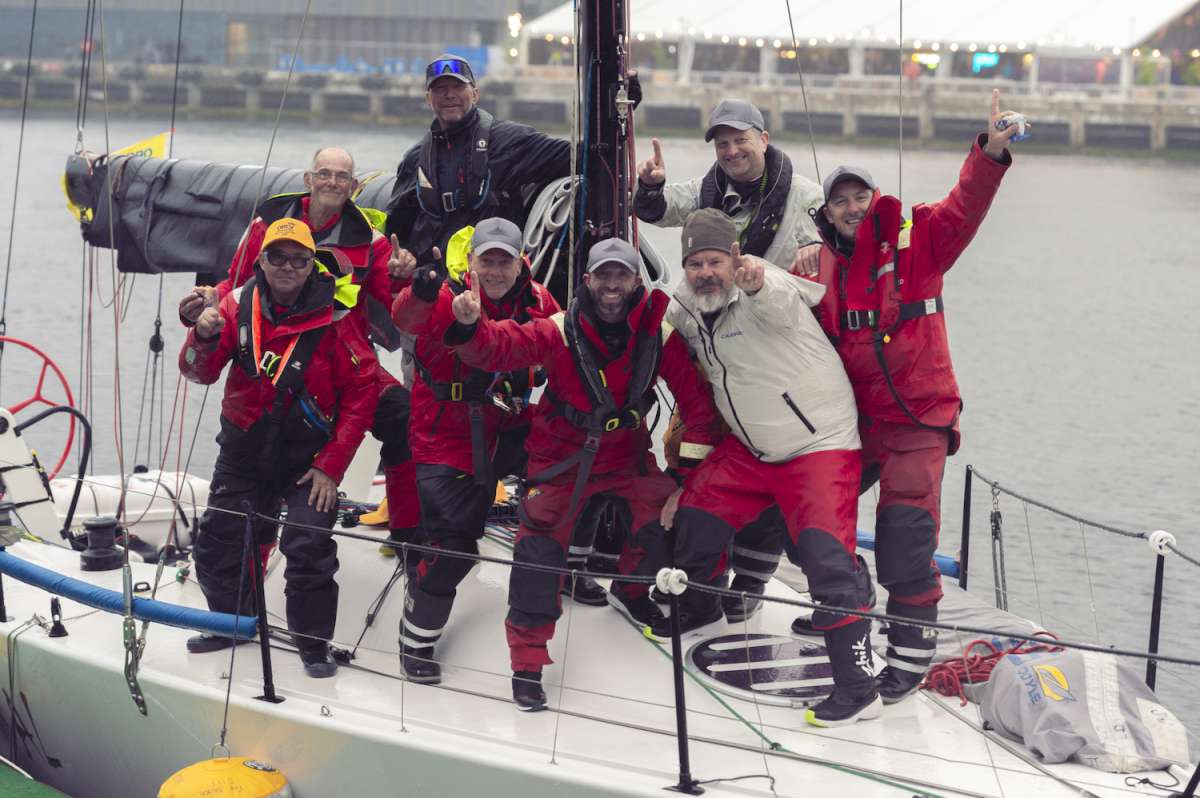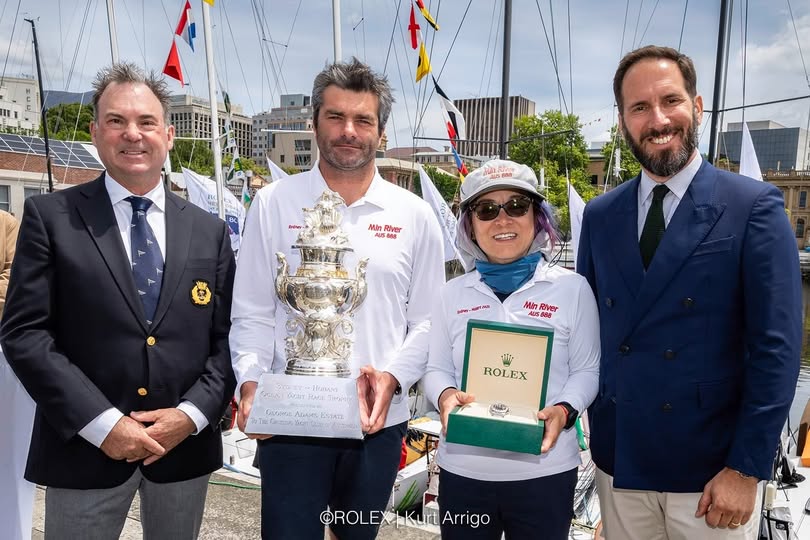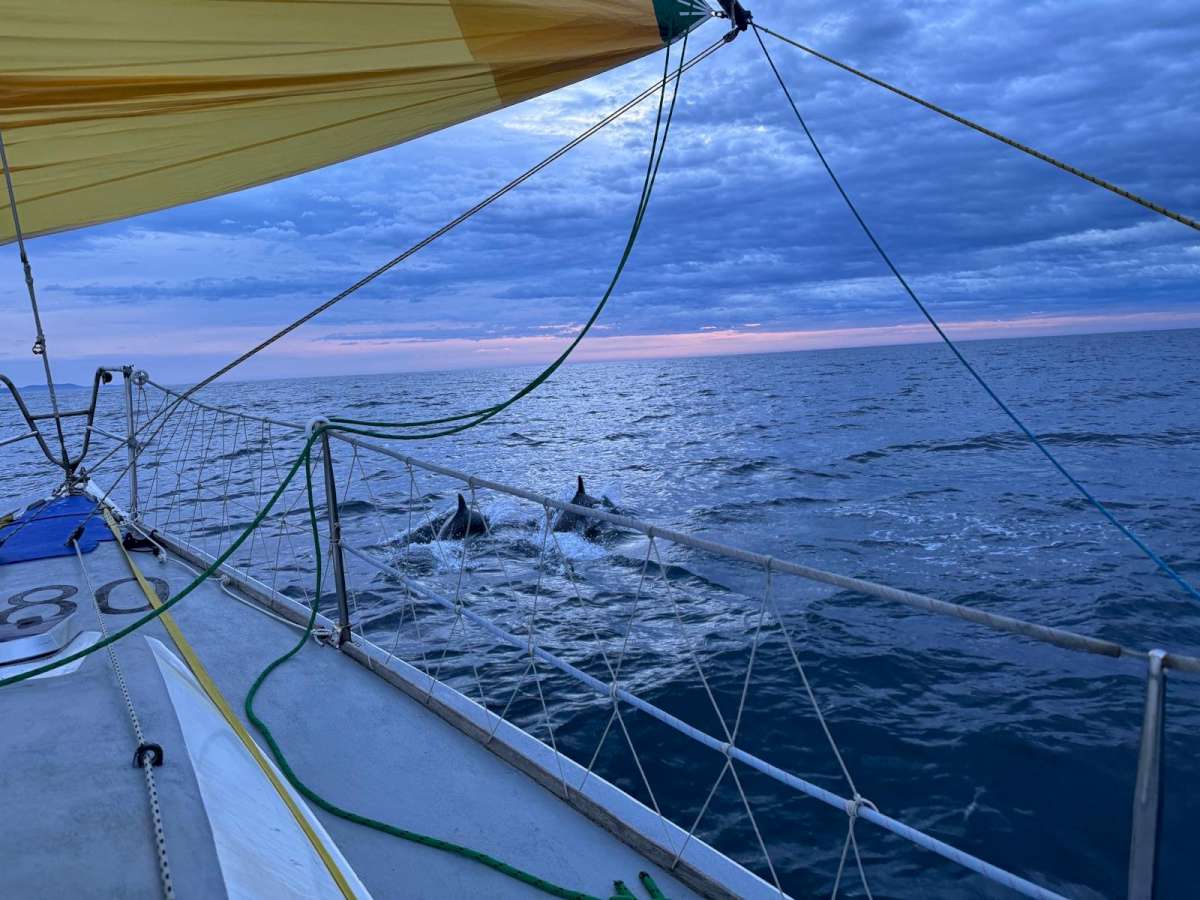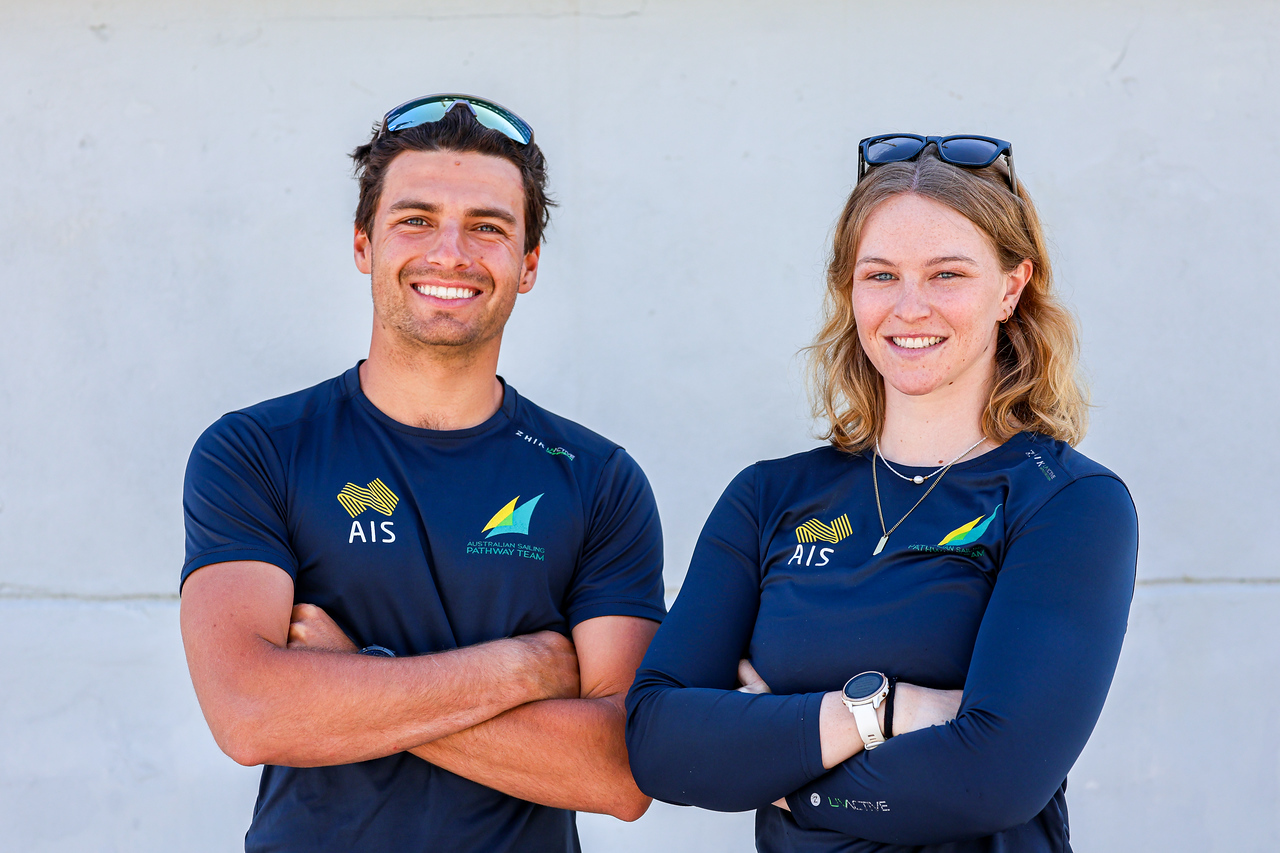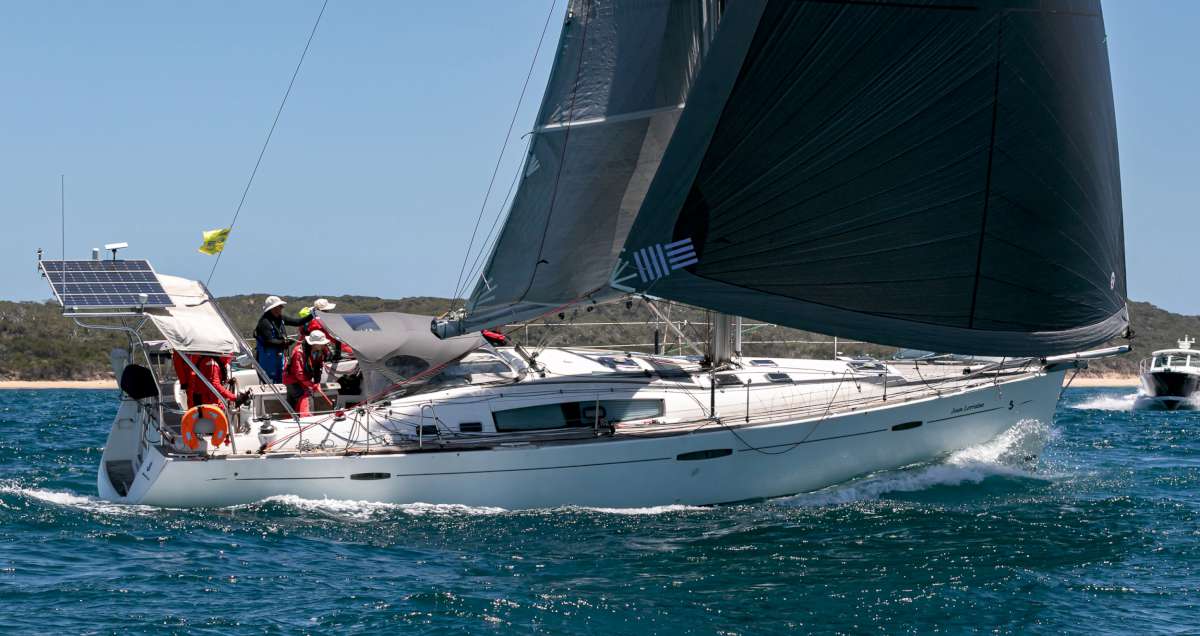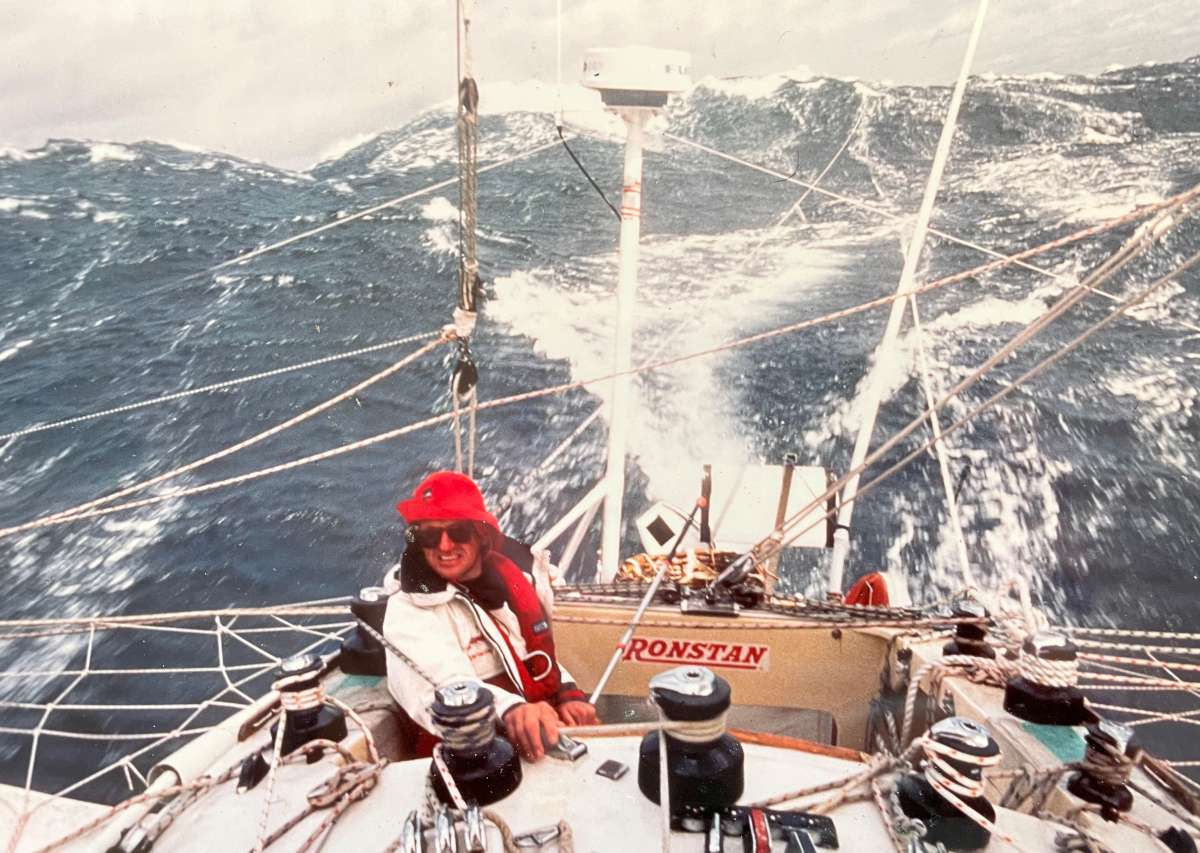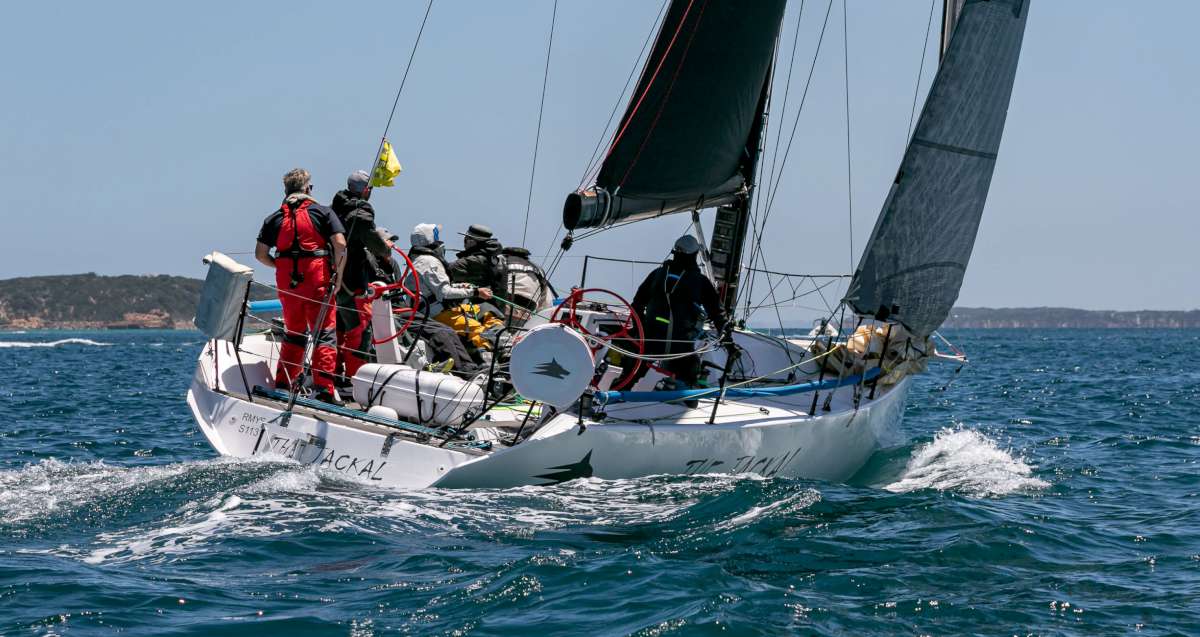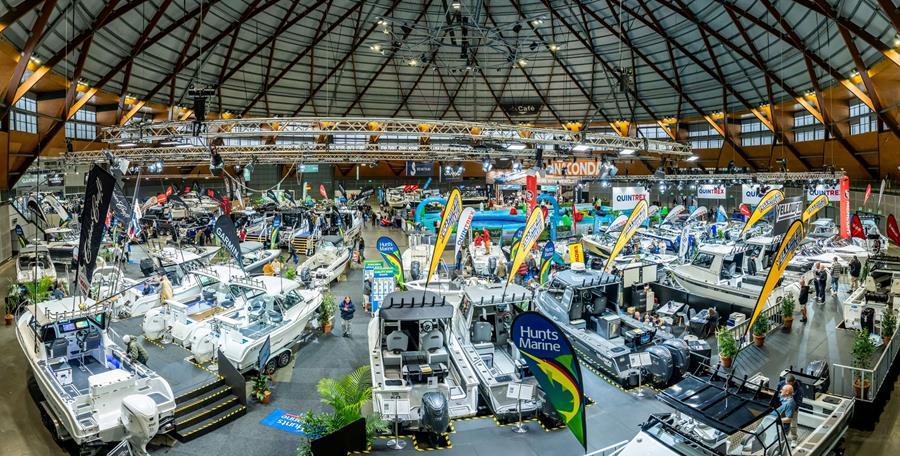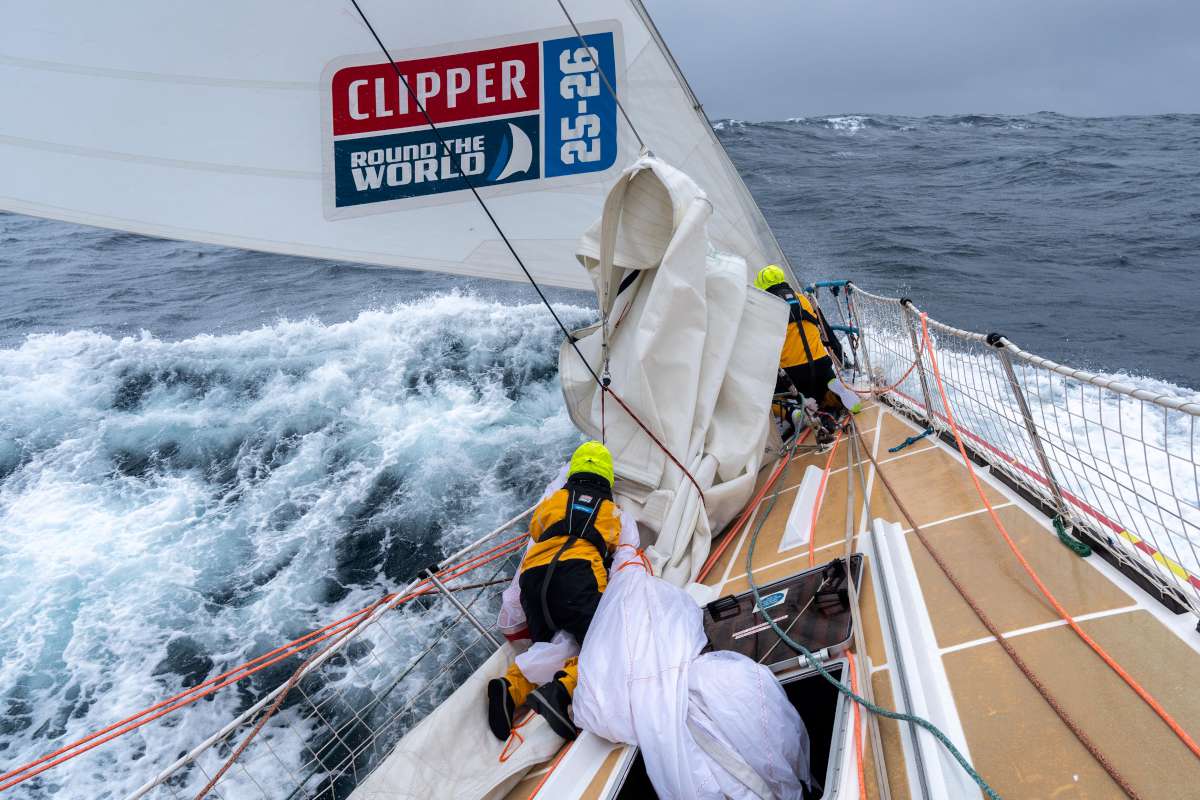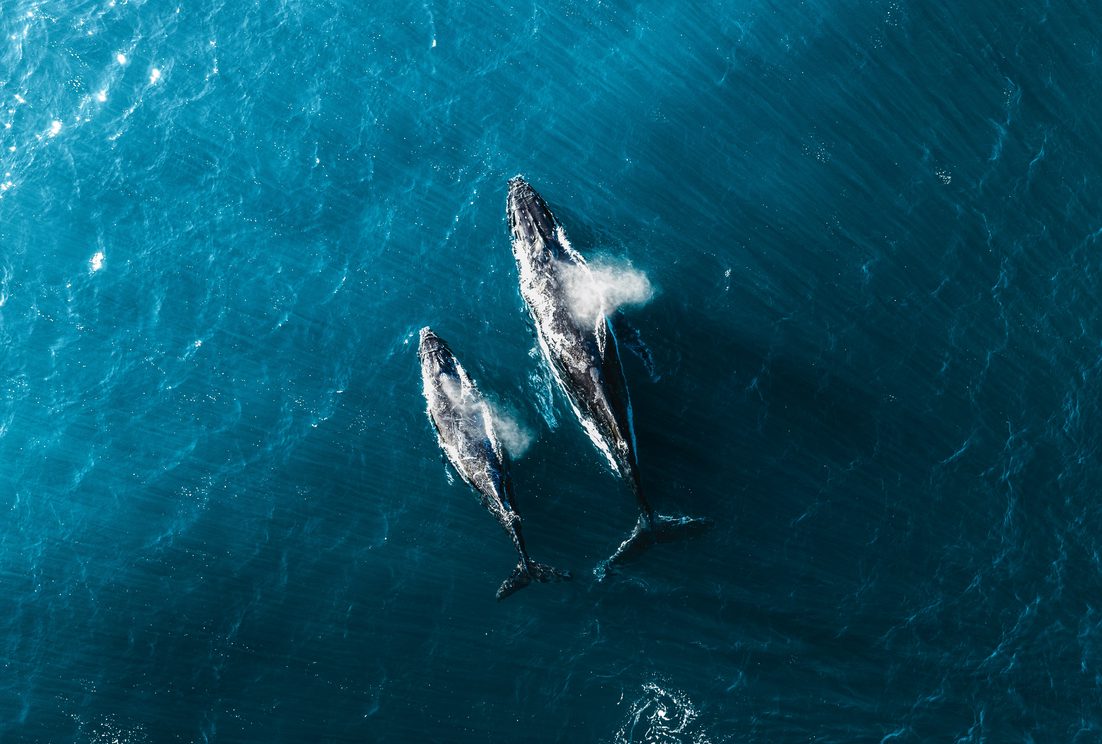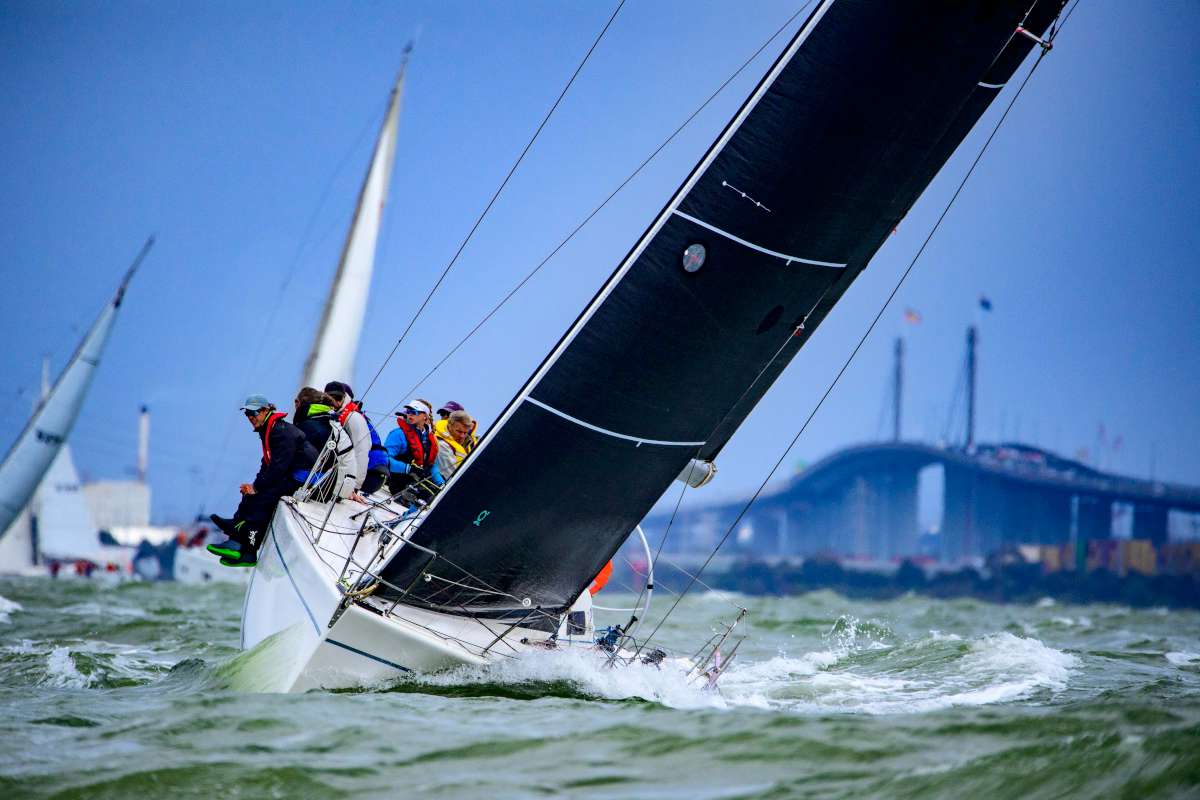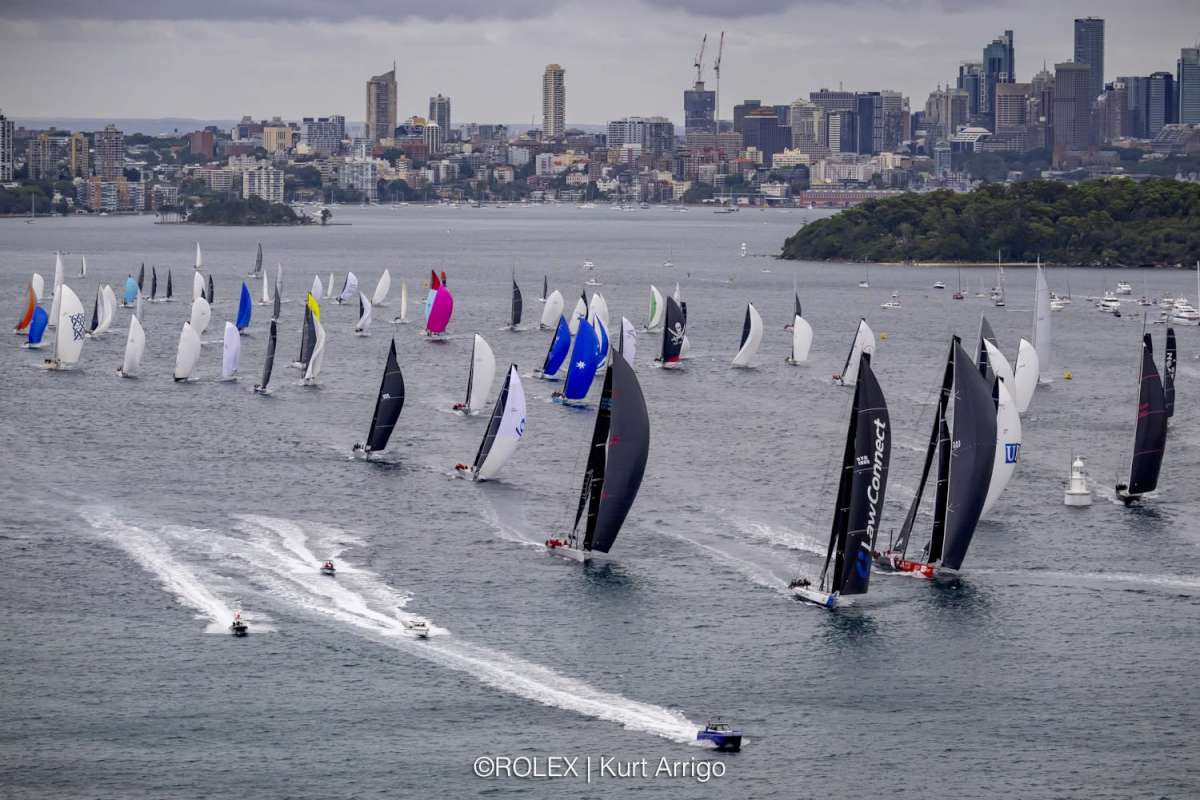Living onboard a boat can be as simple or as complicated as you want. All you basically need is a way to make the boat go, a way to stop her and a way to tell where you are.
But, chances are you will need something more if you want to live with any level of comfort. This article will give a quick outline of these four areas.
The driving force
Your sails are your primary propulsion but few cruisers have a direct influence on their sail plans.
A decent cruising set of sails made of medium weight dacron should last anywhere between five and ten years. There is a huge difference in sail wardrobes between boats. We carry a storm jib, number 3 jib, furling genoa and a slab-reefed mainsail.
The longest trips we have made double-handed are six crossings of the Ionian Sea, each of around 300 miles. For us that means two nights at sea. In our five years onboard we still have not hoisted the #3 or storm jib in anger.
Many of our friends carry asymmetric spinnakers or gennakers, but we hardly ever see them flown in the Mediterranean. One of our friends sailed single handed across the Pacific from Panama to Australia and he just flew his genoa the whole way.
Even if you do not plan on carrying a spinnaker it is worth considering rigging for one. We have found the spinnaker halyard extremely useful for hoisting the dinghy onboard and getting a person aloft and the spinnaker pole is great for holding the genoa out when running downwind. If you do not want the spinnaker rig make sure you have at least one spare masthead halyard.
When considering your main you will have three choices: slab reefed (non-furling), in-mast furling, or in-boom furling. Generally the least cost and best performing is the slab-reefed and the most convenient, but hardest to maintain a decent shape, is the in-mast furling. In-boom furling is the most expensive but it is a good compromise. If you want to consider these talk to your sailmaker for a more detailed comparison.
The other means of propulsion is the auxiliary engine.
If you are living aboard you will want a reliable engine which is easy to service and does not use too much fuel. Many production boats offer a turbo or larger engine, but go for the smallest standard engine the boat comes with. Less complexity, less fuel and you will probably still be able to arrive within a few hours of the gas guzzlers next door.
The holding force
So getting the boat moving is fine. What do you do when you want to stop somewhere?
Most liveaboards have at the very least two anchors: the main bow anchor and a kedge. We have a Rocna with 70 metres of chain attached, plus another 35m of nylon rode in the anchor locker and 35m of extra chain stored aft.
We always use a 5m nylon snubbing line to take the pressure off the anchor windlass. Our kedge is the standard Danforth which was supplied by Beneteau, plus we have an additional fisherman’s anchor for weedy ground. We also have a small dinghy anchor to use to keep the dinghy away from rocky, uneven docks. The setup works well.
When ex-Cyclone Oswald was lashing the Queensland coast in 2011 we stayed at anchor behind Moreton Island for three days in winds over 70 knots. We used all 70m of chain in 5m of mud and we never moved. We were almost knocked down and could not hear or see anything, but the anchor held.
Many of our friends stayed in a marina. Then we heard of the damage which was caused by loose objects blown around the marina, boats sinking because the mooring lines came loose, the stories were horrendous. If we had been alongside we would have used our mooring dampers. These are stainless steel springs which, in any surge or chop, work very well in minimising the shock loads on mooring lines and cleats.
Keeping tabs
Navigation has been incredibly simplified as GPS systems have dropped in price and functionality has improved.
Paper charts are not nearly as common as they were even ten years ago, but local pilots are worth their weight in gold. Being able to flick through a hard copy when planning your approach to a new harbour can be quite exciting. Or maybe that is just the navigational nerd in me coming out!
One thing which is critical on any passage and which is often overlooked, is the log book. Pleasure yachts and commercial craft under 25 gross registered tonnage are not required to carry an official log book, but all vessels are required to complete passage plans when going to sea.
One of the most important log entries is your hourly position. If lightning strikes, the lights go out, batteries die, or any other electrical failure happens you can always reconstruct your track from the log and use manual fixes or dead reckoning.
As well as recording voyage information, it is a great place for servicing, part numbers and useful contact details. It does not have to be an expensive leather bound portfolio, just something robust to record the information you need.
The other piece of navigation equipment which is not always respected is the hand-held compass. Keeping one in the cockpit means you can easily see if a vessel is moving ahead or astern of you, or staying on a steady bearing. It is a very reliable, non-electrical way of checking if you are on a collision course. It is also useful for taking bearings and plotting your position if one of the aforementioned electrical disasters strike.
We have anchored in a couple of places off the Queensland coast where there was plenty of water and we were able to get a good anchor fix. Only problem was the GPS put us about 30m onto the beach! You must learn to trust your Mark I eyeball.
Are you comfortable?
So now you can move your boat, stay in one place and know where that place is and how you got there. The next section is probably the most contentious: what do you need to live onboard in comfort?
Without a doubt this is completely subjective, so I will give you some thoughts from various liveaboards.
Partner Jane wrote a great article in the December issue of Cruising Helmsman called ‘Long-term cruising: when wants become needs’. For us these included solar panels, larger capacity gel batteries, water maker, lightweight twin-tub washing machine, aluminium RIB with 4-stroke outboard, fully enclosed cockpit clears (very useful when anchoring in cyclones!), dehumidifier, extra thick cockpit cushions, fold-up bikes, mattress topper for a really comfortable sleep, Cobb BBQ, our kayaks and, of course, a couple of hot water bottles.
The above gives us a very comfortable lifestyle onboard Amble, our Beneteau Oceanis 43. But some of our liveaboard friends scoff at a couple of the items above; particularly when we stuff the hot water bottles down our foul weather gear as we come on deck for our night watches. They might laugh, but we stay warm!
Although some consider our list is excessive, I think we are about average. Freddie and Dunna are Icelandic friends of ours onboard Cava who also winter in Sicily. They seem to survive very well without any hot water and they use a manual pump to pressurise their cold water. They do, however, wear very heavy jumpers and they are Icelandic.
There are some who swear by equipment which we have managed without for the last five years. Many use davits to hoist their dinghy each night. We tow our RIB when we are day-hopping and use a small pulley system to bring the engine onboard each night. When we are on passage we hoist it onto the foredeck with the spare halyard.
We carry a small Pro Dive deck compressor which provides air to around 7m depth, while many liveaboards carry full Scuba gear. Others just free dive to clear anchors or swab the hull.
Cruisers visit beautiful places and see amazing sights, so some carry elaborate cameras with telephoto lenses to capture the moments. We use a small hand-held camera which is 15 years old. When it finally dies we will just make do with our iphones.
During summer you will not need a lot of entertainment, as the long days and friendly anchorages means you will have plenty to do outdoors. But long winter nights in a marina are different.
Whenever we pulled into a marina when we were sailing up the east coast, one of our first stops was the laundry. Everywhere we have been we’ve always swapped our hard copy books with others which sailors have left in the laundries.
We now have Kindles and when we first arrived at Marina di Ragusa we thought we would be generous and share our couple of thousand books. Very naive!
The thought was appreciated, but we soon realised that you can tell how long someone’s lived onboard by the number of ebooks, movies and TV series they have. We now have over 30,000 books, movies and TV series electronically stored. Yet we are still seen as having a small collection.
Every liveaboard has something which they know is useless but somehow stays onboard. When we first started cruising we were told that the three most useless things in a boat were an umbrella, an ex-Navy officer and a wheelbarrow. At least we do not carry a wheelbarrow!
But for some reason we have two pairs of stilettos onboard. They have not been worn for five years, but I know they are not going to be thrown overboard.
Others carry items which they list as useless but ‘necessary’. Microwaves, hair colour, blow-up kayaks, hammocks …. the list could go on and on.
No matter what boat you have, there will always be something which one person will say is useless. But unless all the crew agree, it is probably worth world peace to leave it onboard.
When stripped back to basics, boats are pretty simple. You have your propulsion, ground tackle, navigation systems and your own choice of gear to make you as comfortable as you want. Although I have made a few suggestions in this article, the trick is to work out the equipment level that makes you comfortable onboard your own boat.
Brett Campbell





